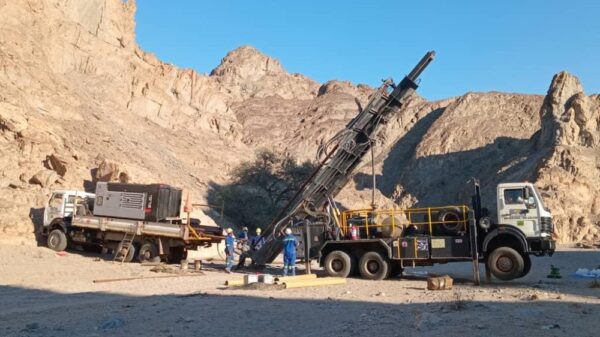China has closed its fist around critical minerals required for the global energy transition and net-zero emissions initiatives, according to a new report from the College of William & Mary in the United States.
The college released the report Wednesday showing how the Chinese administration has used a network of 26 state-backed financial institutions over the past two decades to achieve its aims.
The database exposes how Beijing has strategically used a complex network of financial mechanisms to dominate the global supply chain for critical minerals. These minerals—copper, cobalt, nickel, lithium, and rare earth elements—power emerging technologies like electric vehicle batteries and solar panels.
Between 2000 and 2021, Chinese financial institutions issued nearly USD$57 billion in loans to 19 low- and middle-income countries, the report reveals. A parallel study, Power Playbook: Beijing’s Bid to Secure Overseas Transition Minerals, details 93 loan commitments and one grant from 86 financiers—a mix of Chinese and non-Chinese entities—to 59 recipients.
Both studies reveal how China has used its vast foreign exchange reserves to secure long-term control over strategic mineral deposits in resource-rich nations. Key examples include copper and cobalt from the Democratic Republic of Congo and Peru, nickel from Indonesia, and lithium from Argentina.
Chinese entities structured over 75 per cent of these investments to secure ownership stakes, primarily through joint ventures (JVs) and special purpose vehicles (SPVs). These arrangements give Chinese firms significant influence over the extraction and processing of these resources.
The report also highlights a key difference between China’s mineral financing strategy and its flagship Belt and Road Initiative (BRI), President Xi Jinping’s global infrastructure program.
Read more: Ontario government dishes out $13M to support critical minerals mining
Read more: Blinken heads for Argentina to speak with Milei on global concerns, critical minerals
Report highlights Beijing’s methodical strategy
The report shows that mineral lending often involves serial loans rather than one-off arrangements, signaling a deeper, long-term commitment to securing upstream resources. According to AidData, nearly 25 per cent of loans in the mineral sector had Chinese guarantors— a sharp contrast to the estimated 4 per cent guarantee rate for general BRI projects.
The findings align with several recent reports, including a recent article by The Economist revealing that, in 2023, Chinese companies invested around $16 billion in foreign mines. This marked the highest figure in a decade, up from less than $5 billion the year before.
The report raises concerns about the implications for host countries. In two-thirds of cases, joint ventures and special purpose vehicles excluded significant government ownership, reducing financial liabilities for these nations but also limiting their access to future financial returns from mineral extraction.
AidData’s findings highlight Beijing’s methodical strategy to secure access to critical minerals while other nations risk falling behind.
As these strategies come under scrutiny, the report draws attention to the broader geopolitical implications of Beijing’s dominance. It also raises pressing questions for developing nations about how to balance the economic benefits of Chinese investment with the need to retain sovereignty over their natural resources.
The global response to China’s dominance has been multifaceted.
Western nations have started to wake up to the challenge, with initiatives like the U.S. Minerals Security Partnership and the EU’s Critical Raw Materials Act aiming to diversify supply chains and reduce dependency on China.
These efforts include increasing domestic production, fostering international partnerships, and exploring alternative sources. However, experts argue that these responses might be too little, too late, or not aggressive enough, given China’s entrenched position.












